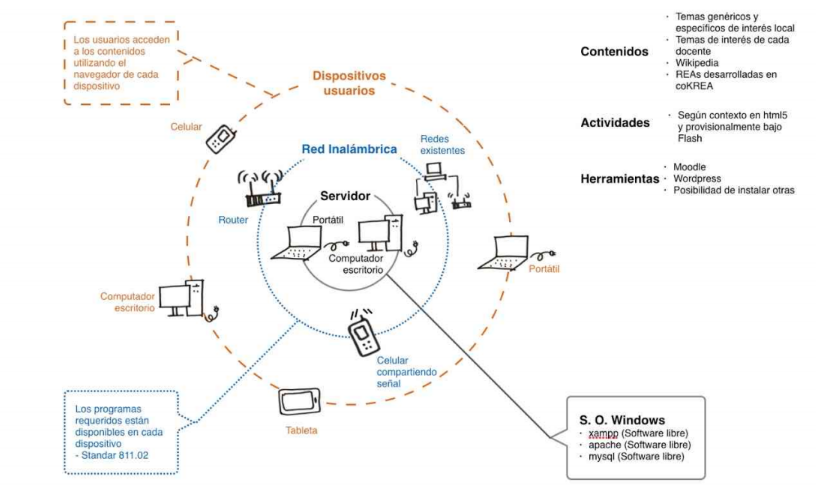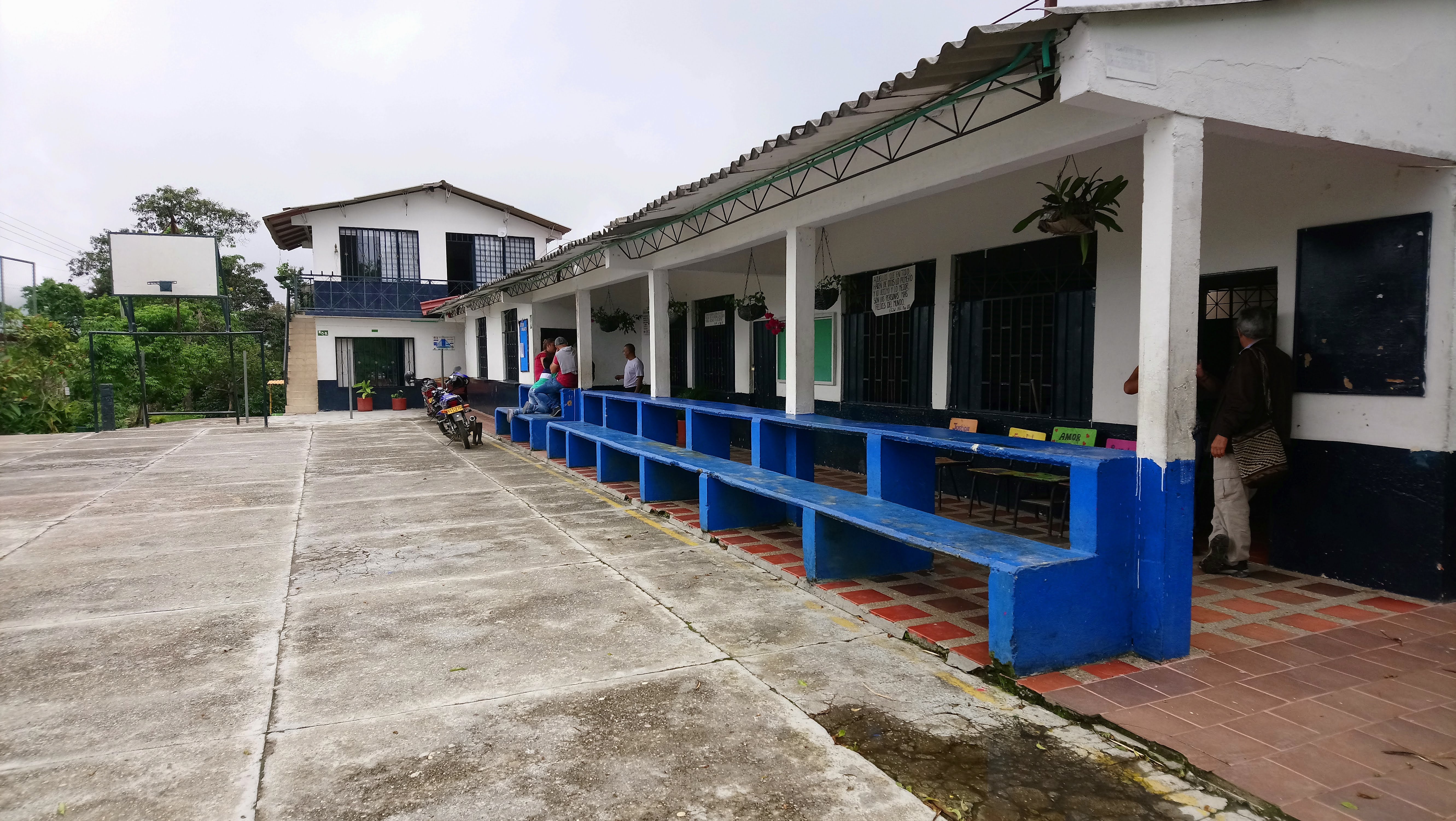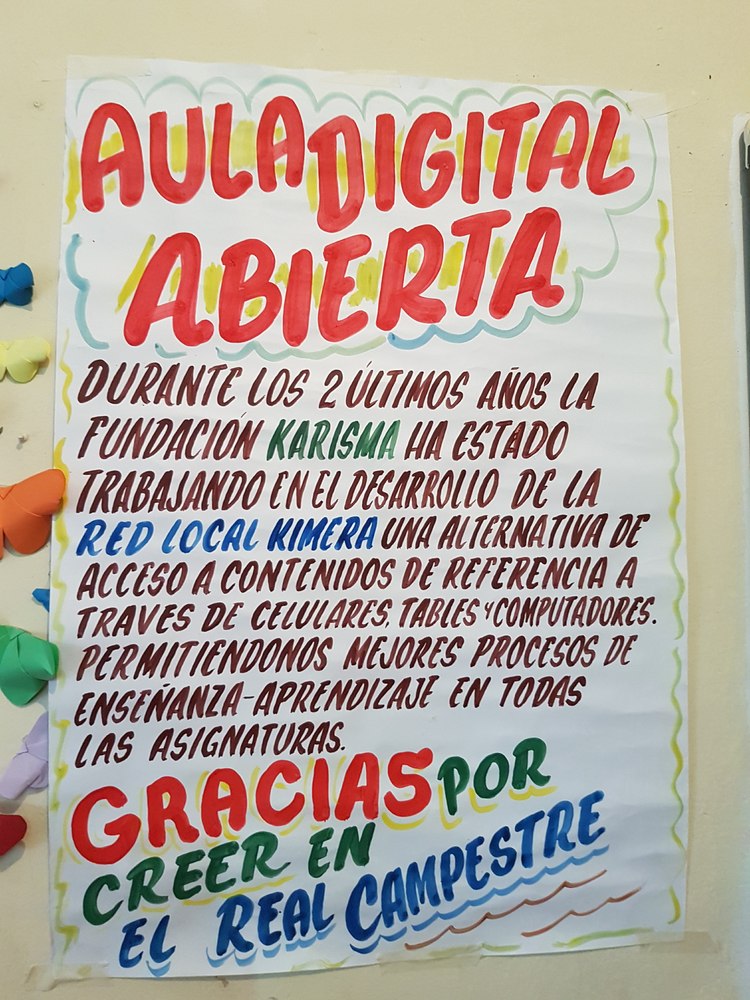From short (very short) videos to a newscast
From short (very short) videos to a newscast
In January 2018, the Real Campestre School in Fresno (a small town in the coffee region in Colombia) opened its doors to a new project named: “Oportunidades para jóvenes cafeterxs”. The core of the project is a technological tool, a local network that brings a digital environment into the classroom where students and teachers can upload and share videos, images, text and any kind of digital resources.
Kimera Local Network

Graphic that explains how works the Kimera Local Network
Why is this important?
In Fresno, like in many other places in Colombia, connectivity is still a challenge. In the cities, 91 out of 100 schools have Wi-Fi or broadband, but in the countryside, only 53 out of 100 can enjoy this privilege ” (Semana, 2020).
Institución Educativa Real Campestre

Photo of the school entrance.
A network build of stories!
There is not a technological tool that fully works without an appropriation process. “Oportunidades para jóvenes cafeterxs” seek to raise curiosity and the desire to know and learn as well as the willingness to listen and narrate, in order to use the local network as a tool to share those stories and resources that students and teachers find interesting, fun and useful.
Poster Aula Digital Abierta

Photo of a poster with information about the Kimera Local Network.
What you want to do?
We asked students of Real Campestre to videotaped a short video to introduce themselves. Some of them looked shy in front of the cell phone camera, some spoke too fast, but others looked quite confident. In a diverse group like this, you will find a different reactions and ways to participate in the project.
The short videos exercises continued during the whole project: it could be understood as a collective album or as the “behind the scenes” of the project.
Presentation Angie Dayana Escobar Ballesteros
A short video presentation of Angie Dayana Escobar, one of the students participating in the project.
Everything is happening!
In the second year of the project, students want to share all the things that were happening in the school. With the support of some of their teachers, they develop a new idea: a newscast to share the news that take place into their own educational community.
Interviews and reports have been filmed by the students using their own cell phones cameras, a low cost microphone and technical tools like tripods and screens to handle the light are building by the students with recycling materials.
A newscast in the local network
Because connectivity is low or nil in the school, students upload every chapter of the newscast in the local network to be shared with other students or even with their parents when they have access to the network.
“Noticiero Real al día” has 22 videos that are also available on YouTube and Facebook. This initiative has raised new challenges and questions to the students. From what stories they want to share in the news and what technique solutions they need to develop to improve the quality of the image until how they should look and speak in front of the camera.
Visit the youtube channel: https://www.youtube.com/channel/UCwZyE0E5fpLKd607MEJTHiA/videos